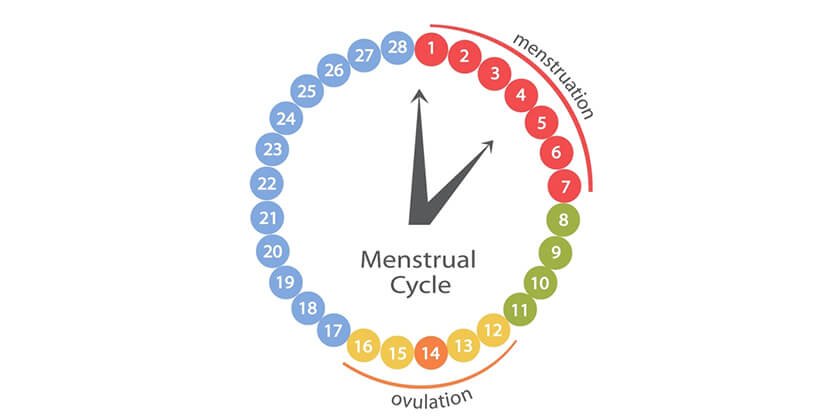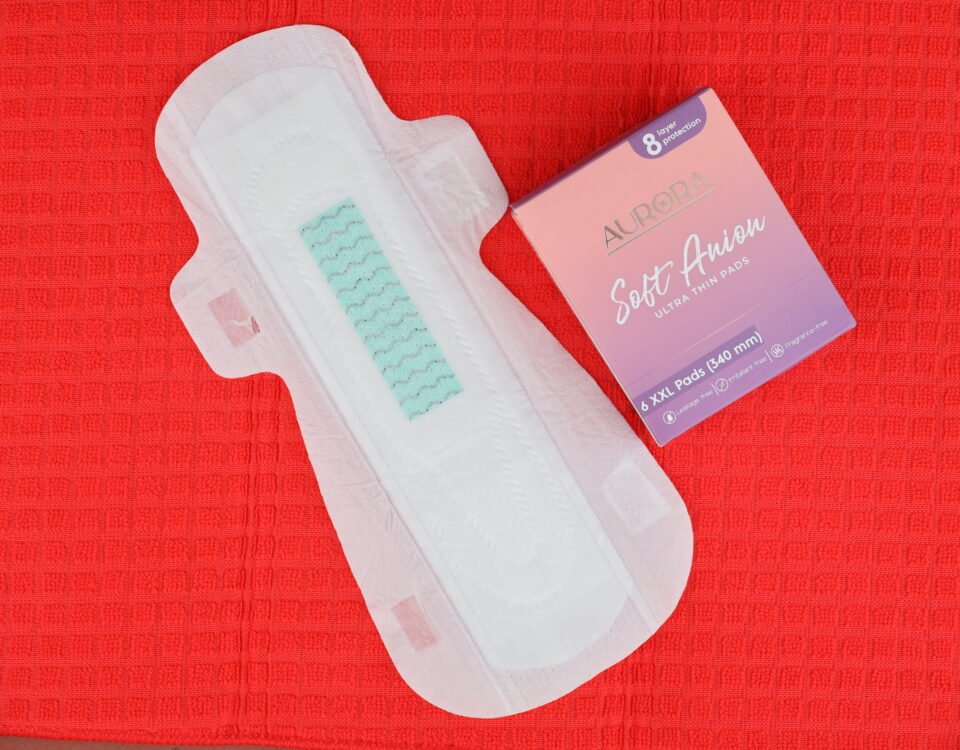
Skin-friendly sanitary napkins: 8 reasons to make the switch
October 15, 2024
Why Handmade Soaps Are Better for Sensitive Skin During Menstruation
October 19, 2024Let’s be honest—periods can make you feel like your body is waging war against itself. The mood swings, the cramps, the bloating, the fatigue—it’s as if your body is begging for help but no one’s answering the call. And while it’s easy to reach for the chocolate, chips, or that third cup of coffee during this time, there’s something that could make a bigger difference than you realise proper nutrition.
Your menstrual cycle isn’t just a monthly event—it’s a constantly moving cycle that affects your body every single day. And what you eat has a huge impact on how you experience it. Food isn’t just fuel—it’s medicine. The right nutrients can help ease the worst of your PMS symptoms, support your energy levels, and balance your hormones, giving you more control over your body when it feels like everything is falling apart.
Here’s why proper nutrition during your menstrual cycle is more important than you think, and how making the right choices can change the way you feel—every day of the month.
1. Understanding the phases of your menstrual cycle
Before we dive into the specifics, it’s important to understand that your menstrual cycle isn’t just about your period. It’s broken into four phases, and each phase affects your body differently.
Menstrual phase
(days 1-5):
This is when your period starts. Your estrogen and progesterone levels drop, leading to mood swings, cramps, and low energy. Your body is shedding the lining of your uterus, and you’ll likely feel more tired than usual.
Follicular phase
(days 1-14)
Right after your period starts, your body begins preparing for the possibility of pregnancy. Estrogen levels begin to rise, and you start to feel more energetic and clear-headed. Your body craves foods that support energy and focus.
Ovulation phase
(around day 14):
This is when one of your ovaries releases an egg, and your estrogen levels are at their peak. You’ll likely feel your best during this phase—your energy is high, and your metabolism is faster.
Luteal phase
(days 14-28):
After ovulation, your progesterone levels rise in preparation for pregnancy. If no pregnancy occurs, your hormone levels drop, leading to mood swings, bloating, and cravings as your period approaches. This is when PMS hits hardest.
Each phase demands a different kind of nutritional support. Understanding this can help you tailor your diet to ease symptoms and keep your body balanced throughout the month.
2. Combatting fatigue with iron and protein
We all know that fatigue can hit hard during your period, especially if you have a heavy flow. When you lose blood, you also lose iron, which is critical for keeping your energy levels up. This is why so many women feel utterly drained during their period—they’re literally running on empty.
To combat this, you need to replenish your iron stores with foods rich in heme iron (found in animal products) or non-heme iron (found in plant-based foods). Pairing these foods with vitamin C helps your body absorb iron more effectively.
Best sources:
- Heme iron: Red meat, poultry, fish
- Non-heme iron: Spinach, lentils, chickpeas, tofu
- Vitamin C: Bell peppers, citrus fruits, strawberries
But iron alone won’t do the trick. You also need protein to keep your energy levels stable and support your body as it goes through its cycle. Protein helps with cell repair and keeps your blood sugar steady, preventing the energy crashes that can make PMS feel even worse.
Boost your energy during your period with iron-rich foods and protein. Try incorporating foods like spinach and lentils alongside a source of vitamin C for maximum absorption.
3. Managing mood swings with healthy fats
Let’s talk about the rollercoaster of emotions that comes with PMS. One minute you’re fine, the next you’re snapping at someone over nothing, and then you’re crying for no reason. These mood swings are often triggered by fluctuating hormone levels, particularly estrogen and progesterone.
One of the best ways to balance these hormones is by including healthy fats in your diet. Fats are the building blocks for hormone production, and without enough of them, your body struggles to maintain hormonal balance.
Omega-3 fatty acids, in particular, are powerful mood stabilizers. They help reduce inflammation, which is often linked to mood swings, and they support brain health, making it easier to cope with stress.
Best sources:
- Salmon, mackerel, and sardines
- Flaxseeds, chia seeds, and walnuts
- Avocados and olive oil
Adding these fats to your diet throughout the month can help smooth out the emotional turbulence that often accompanies your cycle, leaving you feeling more grounded and in control.
Stabilize your mood swings by incorporating more omega-3 fatty acids into your diet, like salmon, flaxseeds, or avocados.
4. Fighting bloating and water retention with magnesium
Bloating is one of the most uncomfortable symptoms of PMS, and it can make you feel like you’ve gained five pounds overnight. But there’s a natural way to fight back against bloating and water retention: magnesium.
Magnesium is a natural muscle relaxant and helps regulate your body’s fluid balance. It can reduce bloating by allowing your muscles to relax and easing the fluid retention that often makes you feel puffy during your period.
Best sources:
- Leafy greens (spinach, kale)
- Nuts and seeds (almonds, pumpkin seeds)
- Dark chocolate (yes, really!)
Magnesium also plays a crucial role in reducing cramps by helping your muscles relax and easing tension in the uterus. It’s a must-have mineral for anyone struggling with PMS or painful periods.
Beat the bloat with magnesium-rich foods like leafy greens and nuts, and treat yourself to a little dark chocolate—it’s good for you!
5. Beating cravings with fiber and complex carbs
We’ve all been there: You’re a week away from your period, and suddenly you’re craving every salty, sugary snack in sight. But indulging in junk food only sets you up for more intense mood swings and blood sugar crashes.
Instead of giving in to unhealthy cravings, focus on filling your plate with fiber and complex carbs. These foods keep you feeling fuller for longer and help regulate your blood sugar, which can reduce cravings and stabilize your energy levels.
Best sources:
- Whole grains (quinoa, brown rice, oats)
- Vegetables (sweet potatoes, carrots)
- Legumes (beans, lentils)
Eating complex carbs also helps boost serotonin levels, the “feel-good” hormone that can take a nosedive during PMS. By keeping your serotonin levels steady, you’re less likely to feel irritable, anxious, or down.
Crush your cravings with fiber-rich foods like whole grains and legumes, which keep your blood sugar stable and your mood in check.
6: Hydration: more than just water
It might sound simple, but hydration is one of the most overlooked aspects of menstrual health. When you’re dehydrated, your body retains more water, leading to bloating and fatigue. Staying properly hydrated helps flush out excess sodium, reducing water retention and keeping your energy levels high.
But hydration isn’t just about drinking water. You can also stay hydrated by eating water-rich foods like cucumbers, melons, and celery. These foods also come packed with important nutrients, making them a smart addition to your diet during your cycle.
Stay hydrated by drinking plenty of water and incorporating water-rich foods like cucumbers and melons to beat the bloat and fatigue.
7. Supporting hormone health with vitamin B6
Vitamin B6 is a powerhouse when it comes to supporting your hormones, especially during the luteal phase when PMS is at its peak. B6 helps regulate the production of dopamine and serotonin, which can help stabilize your mood, reduce irritability, and lessen anxiety.
B6 also plays a role in reducing water retention and bloating, making it an essential vitamin for anyone dealing with the physical and emotional side effects of PMS.
Best sources:
- Bananas
- Chickpeas
- Potatoes
By including more B6-rich foods in your diet, you’ll be giving your body the tools it needs to manage the emotional ups and downs that often come with your cycle.
Boost your hormone health with vitamin B6-rich foods like bananas and chickpeas, which help stabilize your mood and reduce bloating.
8. Managing cravings and fatigue with moringa supplements
Sometimes, even with the best diet, you need extra help. This is where Moringa supplements come in. Moringa is rich in iron, magnesium, and vitamins, all of which are crucial for keeping your energy levels up, reducing cramps, and managing fatigue.
Moringa’s high nutrient content makes it an ideal supplement to support your body during all phases of your cycle, especially when you’re low on energy or battling cramps and fatigue. It’s rich in iron to help replenish what you lose during your period, as well as magnesium and calcium to relieve cramps and promote muscle relaxation.
Incorporating Moringa into your diet through supplements can give you the extra nutritional boost you need when your diet alone isn’t cutting it. It’s a simple way to support your body naturally without turning to medications or artificial remedies.
Replenish your energy and fight fatigue with Aurora’s Moringa Supplements, packed with essential nutrients to support your menstrual health.
Your menstrual cycle doesn’t have to be a time of dread. By making nutrition a priority, you can support your body in ways that truly matter—whether that’s fighting off fatigue with iron and protein, managing bloating with magnesium, or reducing mood swings with healthy fats. The food you eat has the power to make your period more manageable, giving you the energy and balance you need to feel like yourself throughout the month.
By focusing on the right nutrients and listening to what your body needs, you can take control of your menstrual health. It’s not just about surviving your period—it’s about thriving through every phase of your cycle.




